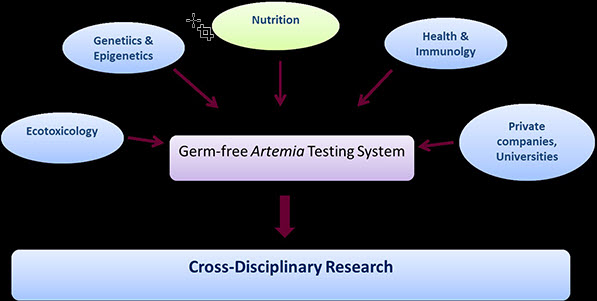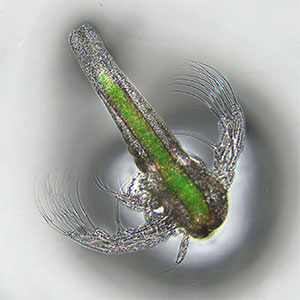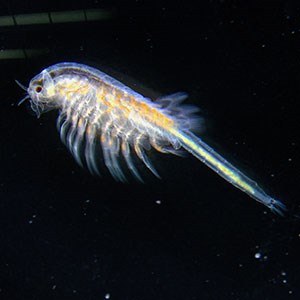In a germ-free animal, nutritional (and other) processes can be studied without interference from the microorganisms commonly inhabiting the gut in a conventional environment. The extent to which that process is modified by microbial action can then be examined by introducing a known microflora. Such kind of gnotobiotic tools is now recognized as essential in the advancement of knowledge on various aspects of nutrition and health.
So far, most nutrition- and health-related studies on aquaculture animals were conducted under conventional environmental conditions, in which there is a wide variety of known and unknown microbial communities often changing in terms of composition and activities. Under such xenic (germ-associated) conditions, the native microbiota that remained associated with the host interacts in a complicated manner with the host e.g. by directly influencing the metabolism of the host and/or by interfering with the tested nutritional component(s), and this markedly alters the true outcomes of such studies. From mechanistic perspectives, it is, therefore, unrealistic to give a logical conclusion to the outcome of the experiments.
A key experimental strategy to study these interactions is to first define the functioning of the host in the absence of microbes and then to evaluate the effects of adding a single or defined population of microbes, and/or certain nutritional compounds (i.e., under gnotobiotic conditions). In the germ-free animal, any nutritional process can be investigated without interference from the microorganisms commonly inhabiting the gut in a conventional environment. The extent to which that process is modified by microbial action can then be examined by introducing a known microflora.
The brine shrimp Artemia represent an excellent (aquaculture) model organism for studying the above-mentioned subject areas because it can be cultured under germ-free conditions. This type of germ-free Artemia (GART) system can be used for various nutritional and immunological studies, such as biological activities of various nutraceuticals (e.g. plant-derived bioactive compounds, yeast-derived glucans, probiotics, heat shock proteins, butyric acid), bioflocs and greenwater technology, transgenerational effects of epigenetics, and trained immunity in crustaceans.
The objective with this project is to set up a GART system at the Department of Animal Nutrition and Management at SLU. This toolbox will be made available to researchers from other disciplines/institutes and private aquafeed and feed additive companies who wish to use this model system for pursuing their research questions (figure 1). This project opens up for collaboration within SLU, and continue the already established international collaboration with Lab of Aquaculture & Artemia Reference Center, Ghent University, Belgium as well as Asian Regional Artemia Reference Center, Tianjin University of Science and Technology, China.

Figur 1: GART platform for cross-disciplinary research.

Image description: An artemia nauplii enriched with FITC labbled archaea. Owner: Asia Regional Artemia Reference Center, China.
Partners involved
- Kartik Baruah, Torbjörn Lundh and Anders Kiessling from the Department of Animal Nutrition and Management, VH-Faculty, SLU.


